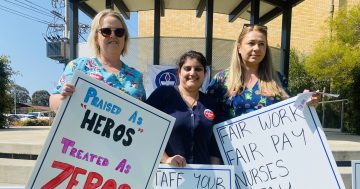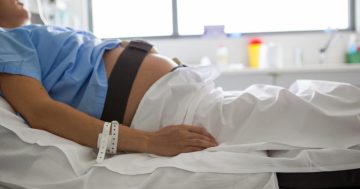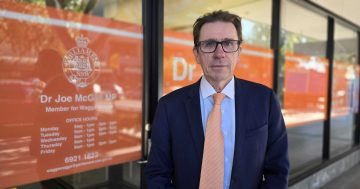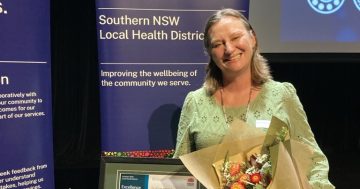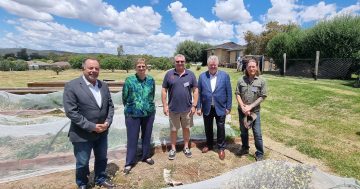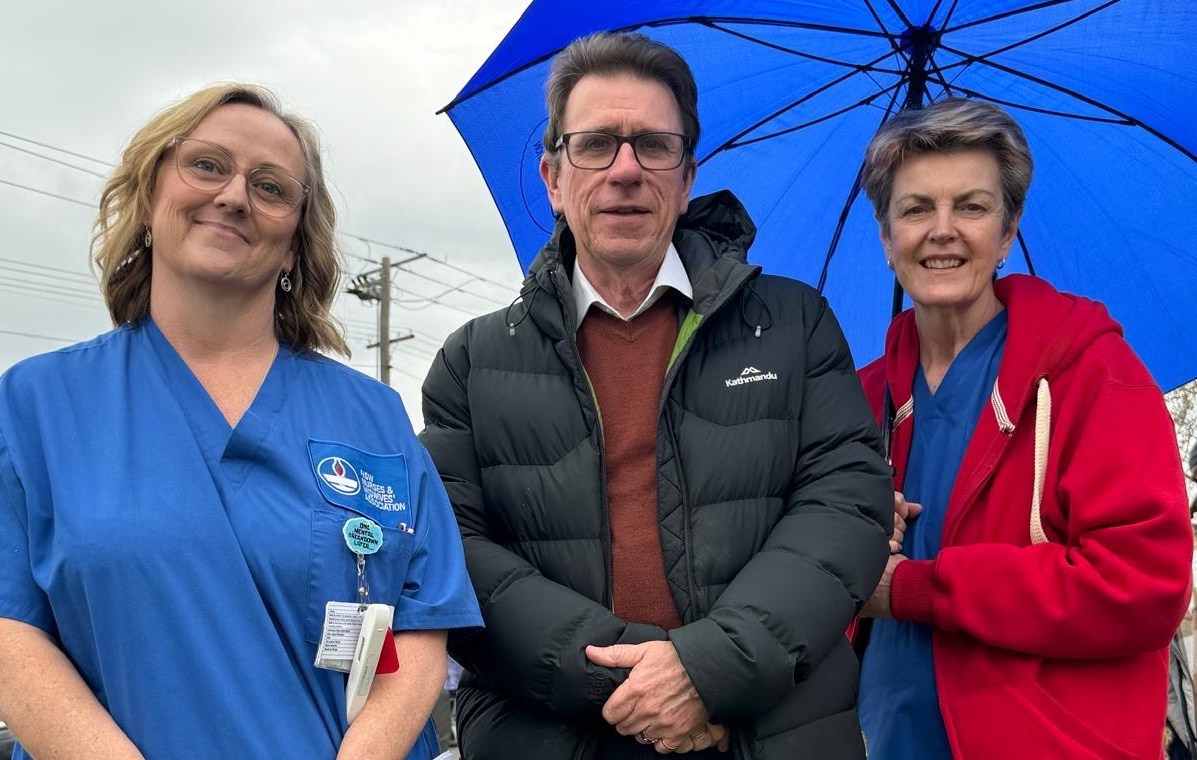
In July, Dr Joe McGirr stood with the NSW Nurses and Midwives Association at a rally in support of local nurses. Photo: Dr Joe McGirr.
“It’s important that we don’t think the job’s done,” warned Member for Wagga Wagga, Dr Joe McGirr following the release of a progress report on regional and remote health.
Dr McGirr chairs the select committee overseeing the implementation of the recommendations of the Upper House Inquiry into Rural and Regional Health.
“There’s no question the government has made progress, and we’ve acknowledged that in the report that we’ve done, but 19 of the recommendations are still to be implemented and some of those are more than a year away, and they’re actually some of the most important ones around workforce and workforce shortages.”
Twenty-five of the 44 recommendations have already been implemented and Minister for Regional Health Ryan Park said the work would continue.
“We made a commitment to implement all the recommendations, and I am really heartened to see we are on track to do this,” he said announcing the release of the progress report this week.
“I would say worker shortages in our regions is the single biggest challenge confronting our health system.
“The rural health inquiry highlighted the need to strengthen the regional health workforce and that’s what we’re doing through initiatives such as the Rural Health Workforce Incentives Scheme which has significantly improved the attraction and retention of health staff in rural areas.”
Since the Rural Health Workforce Incentive Scheme’s introduction in July 2022, the government says it has recruited 3044 health workers and retained 11,337 workers in critical locations across rural and regional NSW.
In August last year the scheme was doubled, offering $20,000 bonus packages for health workers taking up some of the hardest to fill roles.
Dr McGirr agreed that the program was a step in the right direction but deeper issues around workplace culture and renumeration remained.
“The incentive program has stabilised the workforce, no question about that, but it could be refined, it could be better,” he said acknowledging the ongoing industrial action from the Nurses and Midwives Association (NSWNMA) over wages.
“There’s still an outstanding issue with nurses which I think is affecting morale, particularly in rural and regional areas,” he said.
“So our committee has noted that the government has been committed and has made progress, but we can’t afford to take our focus off this.”
The Rural Generalist Single Employer Pathway program is aimed at training and employing more doctors in regional local health districts (LHD) where they can complete their training in both the general practice and hospital settings.
Another round of recruitment will open next month (October) in the Murrumbidgee, Far West, and Western NSW.
“It’s a model that started in the Murrumbidgee five years ago; it’s now been rolled out across Australia, and it has been a success,” said Dr McGirr.
“I think the rollout of the single employer model has been good, but I think we need much more focus on the rural generalist training program, particularly in terms of maternity and obstetric care.
“Only two GP obstetricians enrolled in the program this year, but it is a start.”
Dr McGirr said there was more work to be done on how general practitioners were remunerated and supported and improved funding arrangements between state and federal health departments.
“We need to make sure we look after primary care and general practice in rural and regional areas, because it needs support and it’s fundamental in our health system,” he said.
You can read the details of the rural health inquiry recommendations in the Progress Report.
Original Article published by Chris Roe on Region Riverina.







